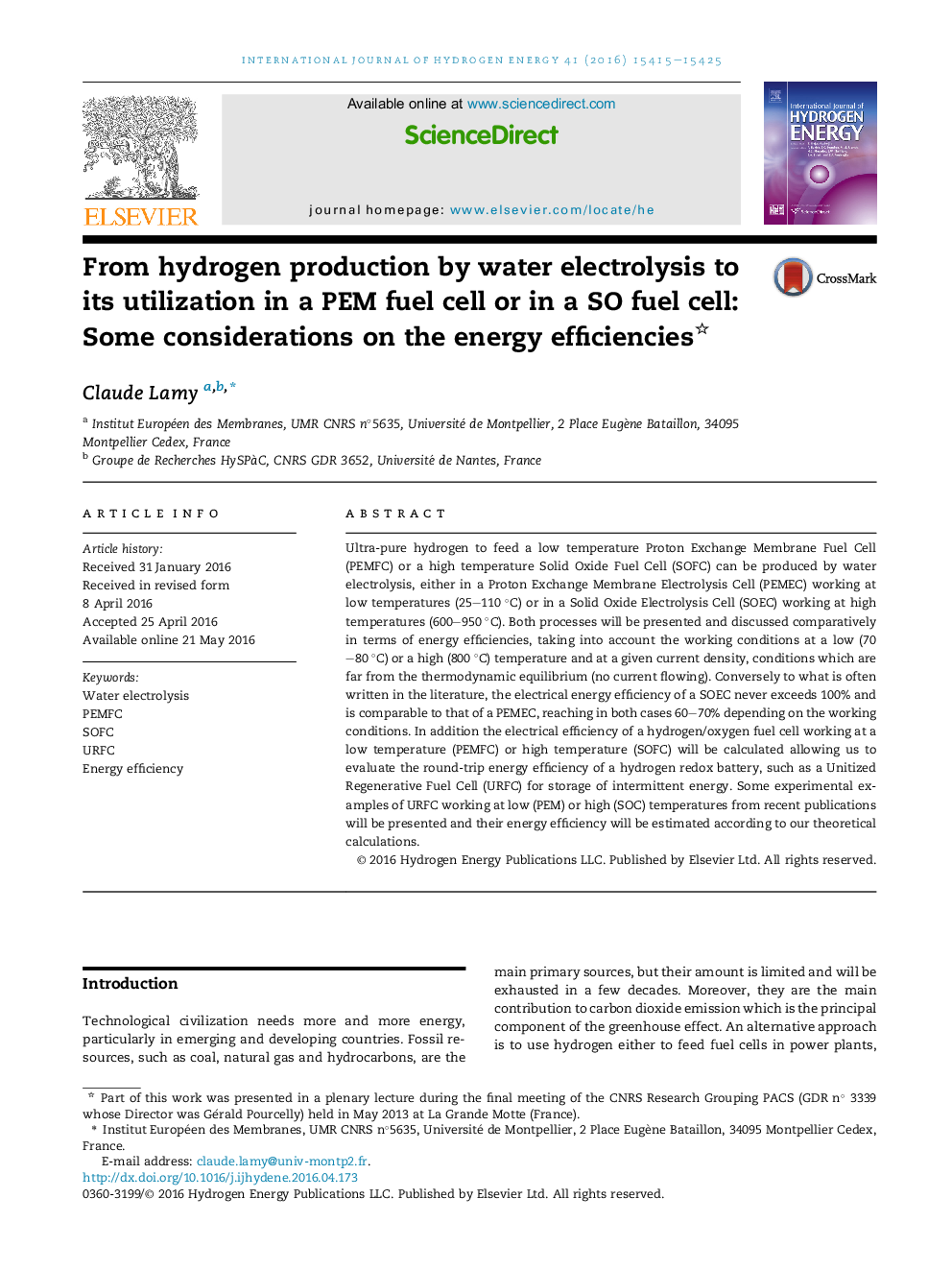| Article ID | Journal | Published Year | Pages | File Type |
|---|---|---|---|---|
| 1270421 | International Journal of Hydrogen Energy | 2016 | 11 Pages |
•The round-trip efficiencies εRT of a SOC or a PEM-based URFC was evaluated using theoretical data from basic thermodynamics.•Data for the PEM technology (εRT ≈ 40–50%) are definitively higher than those for a SOC URFC device (εRT ≈ 20–35%).•This results from a lower Fuel Cell theoretical efficiency for the SOC technology working at higher temperatures.
Ultra-pure hydrogen to feed a low temperature Proton Exchange Membrane Fuel Cell (PEMFC) or a high temperature Solid Oxide Fuel Cell (SOFC) can be produced by water electrolysis, either in a Proton Exchange Membrane Electrolysis Cell (PEMEC) working at low temperatures (25–110 °C) or in a Solid Oxide Electrolysis Cell (SOEC) working at high temperatures (600–950 °C). Both processes will be presented and discussed comparatively in terms of energy efficiencies, taking into account the working conditions at a low (70–80 °C) or a high (800 °C) temperature and at a given current density, conditions which are far from the thermodynamic equilibrium (no current flowing). Conversely to what is often written in the literature, the electrical energy efficiency of a SOEC never exceeds 100% and is comparable to that of a PEMEC, reaching in both cases 60–70% depending on the working conditions. In addition the electrical efficiency of a hydrogen/oxygen fuel cell working at a low temperature (PEMFC) or high temperature (SOFC) will be calculated allowing us to evaluate the round-trip energy efficiency of a hydrogen redox battery, such as a Unitized Regenerative Fuel Cell (URFC) for storage of intermittent energy. Some experimental examples of URFC working at low (PEM) or high (SOC) temperatures from recent publications will be presented and their energy efficiency will be estimated according to our theoretical calculations.
